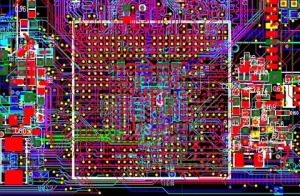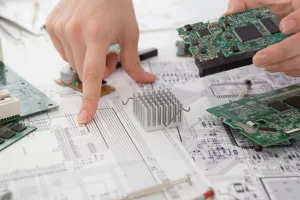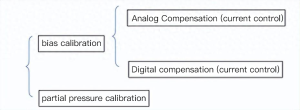目录
ToggleAttaining Reliable & Efficient Industrial PCB Connectivity
Letting machines replace people to work is a main theme in the development of human society, and the efforts and attempts around this vision have never stopped. To the second half of the 20th century, people have introduced the concept of “automation” in industrial manufacturing, that is, the use of a variety of technologies, methods and tools, as far as possible to minimize human intervention in the production process, making the entire process more efficient, fast and error-free, from which mankind formally entered the era of industrial automation.
Entering the 21st century, mankind has taken a big step forward on the basis of industrial automation. The concept of Industry 4.0 was put forward, the main idea is to promote the digital transformation of industry through a variety of information technology, to release the huge potential hidden in the data, leading industrial manufacturing into the era of intelligence.
However, regardless of the evolution of industrial automation, in the manufacturing site, a variety of analysis, decision-making and control of the final landing point, mainly in the motor as an executive part of the drive – so that the motor according to the control instructions in a timely and accurate action is an indispensable part of the key link. Frequency converter and servo drive is industrial automation to complete the motor drive is very common equipment.
Connectivity Challenges for Motor Drive Solutions
The working principle of frequency converter is to convert the industrial frequency AC power supply into DC power supply through rectifier, and then convert the DC power supply into AC power supply with controllable frequency and voltage, and realize motor speed regulation by changing the frequency of this AC power supply. Frequency converter usually consists of four parts: rectifier unit, intermediate circuit, inverter and controller, which is suitable for driving variable frequency motor and common AC motor.
Servo drive is a more complex and precise motor drive equipment, which is based on the open-loop control of AC and DC motors, the speed and position signals obtained through rotary encoders, rotary transformers, etc. will be fed back to the drive to do the closed-loop negative feedback PID regulation and control, coupled with the drive’s internal closed-loop regulation of the current, so that the output of the position, orientation, state, and other controlled quantities, to be able to follow the input target ( Such as displacement or angle) of the changes and automatic regulation, the formation of a dynamic balance can be realized with the system.
Frequency converter and servo drive two of the technical architecture and characteristics, decided that they are suitable for different application scenarios. Generally speaking, the frequency converter system is relatively simple, low cost, higher power, suitable for use in the speed and torque control requirements are not very high in the scene; while the servo drive has high precision, high performance, high response characteristics, in the strict position control requirements of the scene is more suitable.
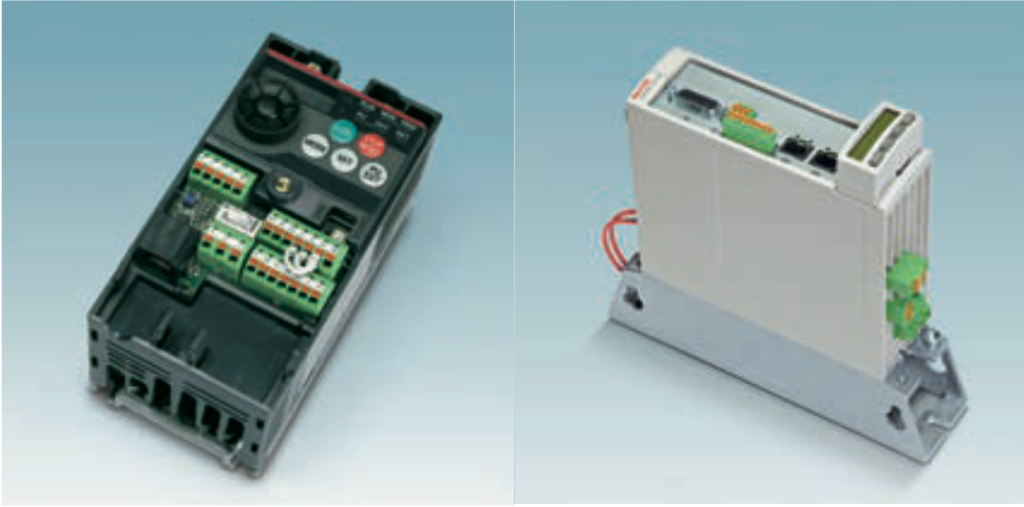
Although the technical characteristics and application scenarios are different, but in the tide of industrial automation development, inverter and servo drives and other motor-driven devices face many of the same challenges, one of the subjects of great concern is the challenge of PCB connectivity design.
On the one hand, as the level of intelligence of industrial equipment, the need for more and more access to the relevant sensing, control signals and data, as well as power supply, so the design of external ports will be more complex; on the other hand, with the increase in the functionality of the device, the internal architecture of industrial equipment will become more and more complex, and the interconnectivity of different internal components, modules and PCBs between the design of the difficulty will also increase.
And the design of all these interconnect solutions, but also to meet the miniaturization and industrial applications specific reliability requirements. In addition, it is worth noting that the industrial PCB connection design also needs to take into account the requirements of the field assembly and maintenance work, as far as possible to simplify the connection process, so that the connection operation is easier and more efficient.
All these design challenges, translated into the inverter and servo drive PCB connection design requirements can be summarized as follows four points:
1. Reliable electrical connection characteristics
2. Adaptable to compact application requirements
3. Supports easy and efficient mating operations.
4. Provide flexible and diversified expandability.
PTS and PTSA PCB terminal blocks
The role of a PCB terminal block is to reliably connect cables to a PCB. In the eyes of many people, this is a relatively simple structure of the interconnection components, but want to design a PCB terminals to meet the requirements of industrial applications, or to take some effort.
Phoenix Contact’s PTS and PTSA PCB terminals, for example, utilize inline technology for more efficient and faster wiring, with tool-less assembly and push-in spring connection technology that ensures interconnect reliability while making fast connections. Compared to standard screw termination and solid wire insert options, these terminals provide faster wiring and easy mating. In addition, the PTS and PTSA PCB terminals feature horizontal wire connections and integrated test points for quick identification of the correct connection for user convenience.
PTS and PTSA PCB terminal blocks have also been designed with flexibility and expandability in mind. For example, these product lines offer a choice of 2- to 24-position models; with 2.5, 3.5, 5 and 7mm foot spacing, rated currents ranging from 2A to 12A, and rated voltages ranging from 160V to 320V; as well as different mounting angle options, including 45°, right-angle, straight, horizontal, and vertical products, which can meet diverse design requirements. Moreover, since these PCB terminal blocks are assembled as a single piece, the number of poles or color coding can be easily customized to meet users’ individual design requirements.
As you can see, the ease of use and flexibility embodied in the PTS and PTSA PCB terminal blocks meet the requirements for efficient connections in a wide range of industrial PCB connection scenarios, making them ideal for use in both inverters and servo drives.
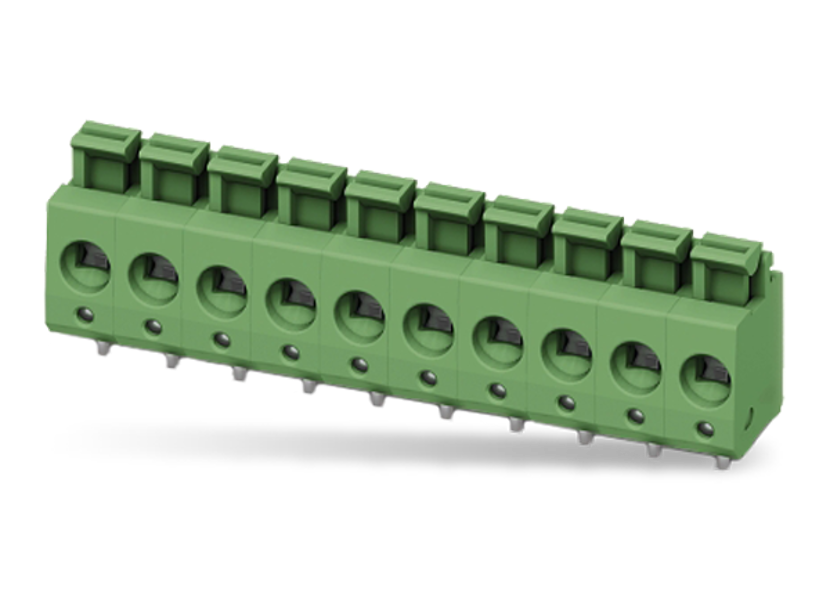
COMBICON control terminal blocks
As can be seen from the name, COMBICON control is a PCB terminal block for measurement and control applications, which consists of two types, fixed and plug-in, the former being suitable for direct PCB connection and the latter being adapted to plug-in connectors to provide fast connections in different orientations, such as horizontal, vertical or inclined.

Easy to use, reliable and efficient – these are the outstanding features of COMBICON control terminal blocks. In order to achieve this design goal, COMBICON control terminal blocks use different connection methods such as screw, push-in spring, piercing and crimping, etc. These connection solutions are unique and can meet the specific requirements of different applications, and they can all ensure reliable electrical connection while greatly simplifying the process of mating operations, which sets the industry benchmark.

In addition, COMBICON control terminal blocks also include explosion-proof certified products, which have been certified to the IEC/EN 60079-0 and IEC/EN 60079-7 standards, and for those working in potentially explosive risk environments, these PCB terminal blocks are clearly the right choice.
The MKKDS series of fixed terminal blocks is a representative product of COMBICON control, which adopts a double-row design with high wiring density; and because the layers are staggered each other, it is very convenient for wiring operation. The product provides 3.5mm and 5mm pin spacing, compact shape, screw wiring method can ensure a solid connection of the cable, so it is very suitable for inverter control circuit interface design and other related products.

In terms of COMBICON control pluggable connectors, the DFMC series is a recommended product. The connector is a 2.54mm and 3.5mm pitch double-row ultra-thin connector, small form factor; it uses spring wiring, providing optional screw top flange and lock release lever, lock release lever can be released to play a role in boosting, taking into account the solidity of the connection and convenience, for servo drive control circuit interfaces and other application scenarios.

With excellent characteristics, combined with a broad product portfolio and compatibility with automated production processes such as wave soldering, COMBICON control terminal blocks always play an important role in the PCB connection of industrial automation equipment.
Conclusion:
The development of industrial automation has posed new challenges to PCB connections in industrial equipment such as inverters and servo drives, and reliable and efficient PCB connection solutions have become a goal for developers to pursue.



